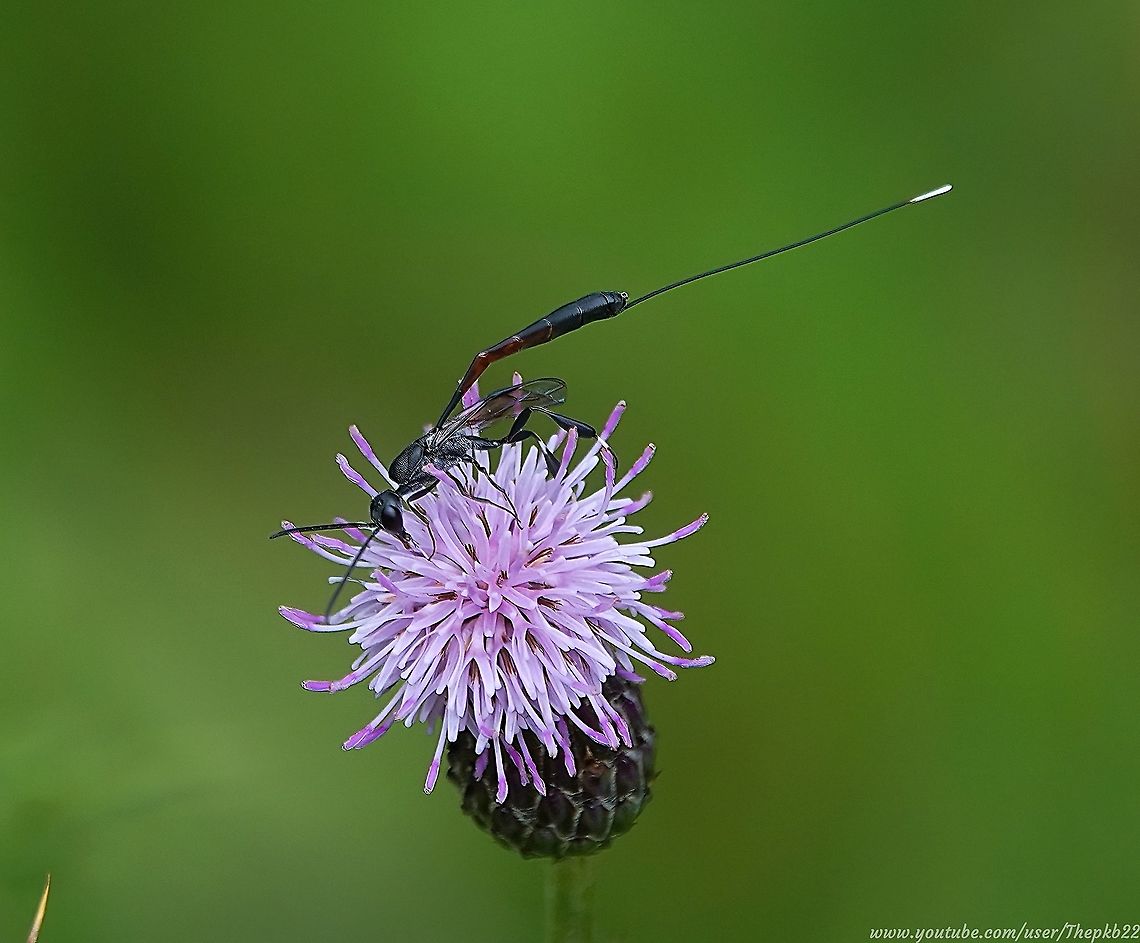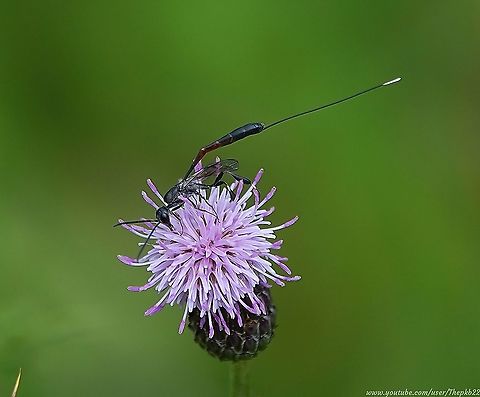 PromotedCountry intro
PromotedCountry intro
The Great Pennant wasp (Gasteruption jaculator)
It's surprising how a little sun can make such a difference.
After a long catch-up and countryside wander with a friend on a dull afternoon in August, we had seen surprisingly little of particular interest.
Suddenly the sun broke through and within a few minutes the seemingly abandoned plants and flowers were suddenly alive.
Among the insects now feverishly gorging on nectar was this beauty, luckily later confirmed identity-wise by one of the foremost experts in the UK.
See and read about it by visiting my video here:

''Gasteruption jaculator'' is a species belonging to the family Gasteruptiidae subfamily Gasteruptiinae.

comments (5)
Thank you. Posted 4 years ago
The great pennant wasp (Gasteruption jaculator) looks formidable, but it is actually quite harmless…to humans, at least. This species, which can be found across much of Europe, is parasitic on the larvae of solitary bees and wasps.
The long, needle-like thing on the end of this wasp’s abdomen is an ovipositor, NOT a stinger. Only the females have an ovipositor, which they use to lay eggs on the larvae of a host insect. Once the eggs hatch, the young devour their victim, in addition to any stored food in the cell. The wasp larvae stay put in the host’s nest throughout the winter, pupate in the spring, and finally emerge as adults in the summer. {Spotted in the UK by Philip Booker} #JungleDragon #Gasteruptionjaculator #Greatpennantwasp
**Be sure to check out Philip’s YouTube channel, where he shares fantastic videos of his wildlife encounters:
https://www.youtube.com/user/ThePkb22/videos
https://www.facebook.com/jungledragonwildlife Posted 4 years ago